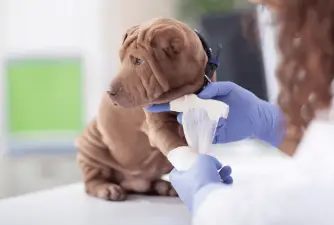Signs of Stroke in Dogs
30.03.2021.
Just like humans, dogs can suffer a stroke. The best thing you could do, as a dog owner, is to recognize the signs of stroke in dogs and seek emergency veterinary help. Stroke in dogs is not as common as it is in humans, but it is just as equally dangerous. Witnessing your dog having a stroke can be very frightening, but you must remain as calm as possible and react as quickly as you can. Here are a few things you should know about stroke and signs of stroke in dogs.
What is a stroke?
A stroke is a sudden cut of the proper blood flow to the brain. A stroke can happen suddenly and without any warnings. The stroke’s damage will depend on several things, and the most important one is - the part of the brain most affected by a stroke. In humans and dogs, there are two types of strokes;
- Ischemic - Ischemic stroke occurs when a blood vessel supplying blood and oxygen to a part of the brain gets blocked, and the brain tissue it is supposed to supply gets damaged.
- Hemorrhagic - Hemorrhagic stroke can occur when a blood vessel bursts and starts bleeding. That will cause increased pressure and lead to swelling.
Both types will limit the blood and oxygen supply to the brain and are considered medical emergencies. Ischemic stroke is more common in humans and in dogs.
How dangerous is stroke in dogs?
Both types of stroke are very dangerous and need immediate veterinary attention. The severity and actual danger will depend on the time the brain is without oxygen and blood. If a dog has a massive stroke in a specific part of the brain, the stroke can damage vital parts of the brain and can be fatal.

However, if given proper care, dogs that had minor strokes can make a full recovery. The key thing is their owners react fast and take them to the animal ER as soon as possible. Minor strokes can end up only scaring you and the dog, but they are not necessarily life-altering events that will leave your dog severely injured or with a damaged brain.
What is a spinal stroke?
Spinal stroke is a term used for describing Fibrocartilagenous Embolism (FCE). It is when a part of the intervertebral disc (cushion that separates vertebras) gets dislodged and causes blood flow obstruction in the spinal cord. Spinal stroke can cause complete or partial paralysis in one or more limbs. However, some “mini” strokes aren’t even diagnosed because it would take an MRI for a complete diagnosis. The problem is that MRI tests are expensive, and dog owners sometimes cannot afford them.
Dogs often tilt their head, but head tilting is one of the signs of stroke in dogs. Check out this article for more information - Why do dogs tilt their heads?
What are the signs of stroke in dogs?
The problem with stroke is that it can seem it appears out of nowhere. Your dog can seem completely normal in one moment and severely impaired in the other. Strokes come without warning or any signs; it is impossible to anticipate a stroke or prevent it from happening. However, when it does happen, we must react quickly and provide our dog with the vet care they need. The most common signs of stroke in dogs are;
- Head tilt
- Vomiting
- Impaired vision
- Balance loss
- Bladder and bowel control loss
- Fainting
- Circling, pacing, facing the wrong way when called
- Abnormal eye movements
- Abnormal facial expressions
- Weakness
- Partial or complete limp paralysis
It is good to know that other diseases and health issues can cause symptoms similar to the signs of stroke in dogs. This disease is called Idiopathic Vestibular Syndrome. It is a disease that disrupts the dog’s inner ear and affects their balance, movement, causes them to tilt their heads, vomit, or experience loss of appetite. Luckily, if provided with proper care, dogs can completely recover from it.
What to do if I notice my dog is having a stroke?
If you notice all the signs of stroke in your dog or you’re suspecting your dog is having a stroke, you should seek immediate vet assistance. Check the dog’s eyelids and gums. If you notice red mucous membranes, that can be a sign of improper blood flow. Prompt treatment is needed to restore the proper blood flow to all parts of the dog’s body. Call your vet or go to the nearest vet clinic near you. If you are not sure what that might be, check out this article with a helpful map - Emergency vet near me.
It is vital your vet notices all signs of stroke in dogs and makes an accurate diagnosis. The correct treatment is essential for a full recovery. However, strokes are often connected to heart issues, so your vet might recommend a complete cardiac check-up. That might include cardiac ultrasound, chest X-rays, or an electrocardiogram. To make the most accurate diagnosis, an MRI or CAT scan might be needed.
Stroke recovery
The dog’s ability to recover will depend on a few crucial things regarding the stroke they had. Those things are;
- The severity of the stroke
- Type of the stroke
- Underlying medical issues
- How fast was treatment received
Unfortunately, some strokes will leave permanent damage, and the most severe cases can be fatal. However, if the dog had a milder stroke and received proper vet attention right away, there is a great chance they can recover. They must have regular check-ups and a dedicated owner that will help them go through the recovery process.
World Dog Finder team







Share